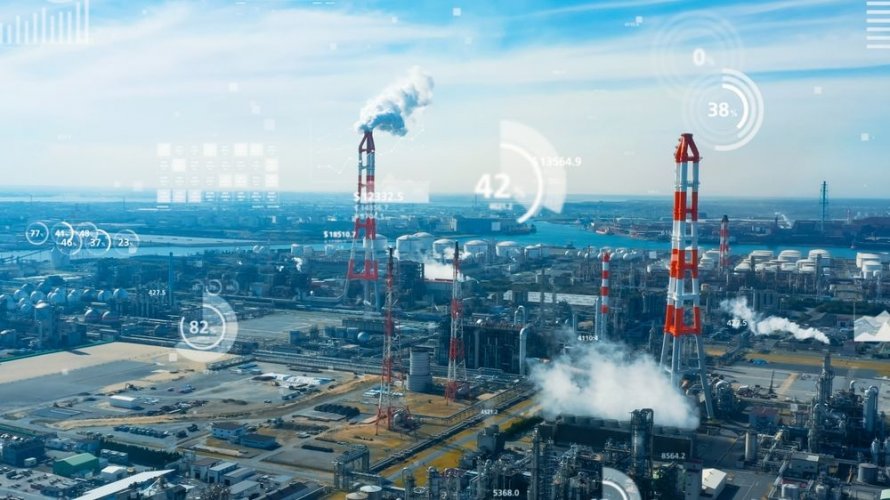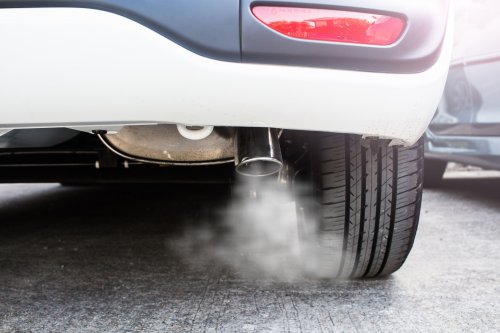Last December, Ruslan Strilets, head of the Ministry of Environmental Protection and Natural Resources, emphasized in his speech at the UN Climate Change Conference (COP28) that it was necessary to update the Nationally Determined Contribution (NDC). He emphasized that a modernized NDC would contribute to the "green" recovery of Ukraine and reduce greenhouse gas emissions.
However, EcoPolitic did not find any information that the NDC is currently being adjusted. Work on the state's important climate document seems to have stopped. On the public pages of the Ministry of Ecology on the Internet, the last references to the IER are dated December last year.
Is the Ministry of Environment working on the NDC?
Almost a year has passed since the Ministry of Environmental Protection and Natural Resources published the Implementation Plan for the updated Nationally Determined Contribution (NDC). In the context of the constant destruction of the Ukrainian economy as a result of military operations, the Cabinet of Ministers has to adjust the NDC.
The editorial board asked more than 20 environmental experts and employees of various government agencies to comment on whether the Nationally Determined Contribution is currently being adjusted. The interviewed experts said that they were not aware of any changes in the NDC.
"After the recent bombing of the energy sector, everything has to be recalculated," said Kyrylo Kryvolap, executive director of the Center for Economic Recovery.
This year, he said, work on updating the NDC has not yet begun.
"We haven't seen a new draft of the NDC," said Olha Boyko, coordinator of the EBA's Committee on Industrial Ecology and Sustainable Development.
So we can conclude that the ministry is not currently working on adjusting the document, and we will then face a 'turbo mode' and populist goals that have not been calculated and discussed with the public and businesses. Another option is that the ministry, as is usually the case, is secretly preparing something and will promote its document without coordinating with the expert community and without involving it, which will affect the quality of the NDC.
In 2021, Ukraine set very ambitious goals that were not supported by any plans or investments. Ukraine is and will remain a party to the Paris Agreement and in the future, as part of the EU, will make efforts to combat climate change. The war has completely changed the reality in which Ukraine exists, and for the next 20-30 years, our main task will be to restore the country with the help of European and global partners.
Between 30% and 70% of each sector of the economy has been completely or partially destroyed or is not working. That is why greenhouse gas emissions in Ukraine from industry and energy have decreased significantly due to the military and economic disaster. Some experts suggest that Ukraine should remain an active participant in the Paris Agreement and not revise the old targets, using the pre-war ones. According to these experts, only after the end of the war and full monitoring for 3-5 years, it will be possible to talk about updating the NDCs for Ukraine.
How the fight against climate change began
At the end of the 20th century, the United Nations recognized the possible catastrophic consequences of climate change. So the UN started looking for ways to prevent global warming of the planet. In 1992, 196 countries signed the UN Framework Convention on Climate Change. As part of the agreement, countries agreed to curb the growth of greenhouse gas emissions into the atmosphere and gradually reduce their volume.
In addition to the convention, the Kyoto Protocol was signed. This was no longer a declaration of intent, but a treaty that required countries to take clear actions within a set time frame. According to the agreement, the countries that are the largest polluters of the atmosphere had to reduce greenhouse gas emissions by 4.2% from 1990 levels by 2012.
However, the Kyoto Protocol failed to meet expectations. Many countries did not fulfill their obligations. In particular, the United States has not ratified the agreement, and Canada has withdrawn from it. Ukraine proved to be not a very good partner in this agreement, which is well remembered by everyone.
Paris Climate Agreement
The Paris Climate Agreement was a new attempt to stop global warming. UN member states adopted it at the end of 2015, and a year later the agreement entered into force.
The Paris Agreement aims to keep the average temperature increase within 2⁰C since the mid-20th century. The agreement also calls for implementing climate change adaptation measures.
To achieve these goals, humanity must stop using fossil fuels. Or use it in such quantities that will not have a harmful impact on the environment. The Paris Agreement stipulates that fossil fuels should be replaced by renewable energy sources (RES). Scientists estimate that to achieve the goal of the agreement, it is necessary to reduce greenhouse gas emissions by 45% by 2030.
Unlike the Kyoto Protocol, the requirements of the Paris Agreement apply to all countries that have signed the agreement. Therefore, after its ratification, all countries presented their Nationally Determined Contributions (NDCs), i.e., action plans to combat climate change.
What is NDC and why is it needed?
The Nationally Determined Contribution to the Paris Agreement is a set of actions that each country must take in most sectors of the economy. In fact, it is a transition from the use of fossil fuels to renewable energy sources in order to achieve carbon neutrality in production. In other words, NDCs are a way to an economy without harmful emissions.
Nationally Determined Contributions are reviewed every five years and adjusted, if necessary, as climate change targets are strengthened.
How Ukraine fulfills its NDC
Ukraine ratified the Paris Climate Agreement in 2015. In the same year, the government approved the first draft of the Nationally Determined Contribution. It aimed to reduce greenhouse gas emissions to 60% of 1990 levels. By 2021, Ukraine managed to reach 62.2%.
However, this success was not due to the government's climate measures, but to the economic downturn caused by ineffective government policies, the gradual decline of industry, and the war in Donbas.
UN experts assessed Ukraine's NDC as unsatisfactory: the planned measures increased greenhouse gas emissions rather than reducing them. Thus, in 2021, compared to 2020, greenhouse gas emissions increased by 8.5%. There was an upward trend, so the NDC needed to be changed.
In 2021, Ukraine updated the NDC: obliged to reduce emissions to 65% by 2030. This figure caused the indignation of experts, activists, business, and the public primarily because the document had no real basis – a plan of actions, mechanisms and investments, no target program.
"The Ministry's sectoral models of the NDC2 were not coordinated with each other, had no economic basis, contradicted existing strategies and did not take into account the problems of the economy due to the pandemic. They were built on the plans of the Honcharuk government and had incorrect macro indicators, primarily in terms of investment," comments Stanislav Zinchenko, Director of GMK Center.
In July 2023, the Ministry of Environment published an action plan for the implementation of the updated NDC. In general, it is planned to reform the forestry sector, accelerate the development of organic agriculture, develop renewable energy sources, modernize industrial enterprises and energy infrastructure; implement energy efficiency programs and projects in all sectors of the economy, etc.
Ukraine's 65% reduction target is 10% higher than that of developed European countries. This is surprising because our country does not receive as much investment. Why did Ukraine decide to burden itself so heavily with populist climate goals? Experts estimate that at least €102 billion should be allocated to implement the measures of the updated NDC. For comparison, all foreign direct investment in Ukraine from 2002 to 2023 amounted to $97.5 billion. The government decided that they could fulfill the ambitious NDC. However, they never answered the question of where they would get the money.
Despite the ambitious plans, the commitments were not implemented. Given the budget deficit, there was no funding for the activities. The Russian invasion of Ukraine put an end to the plans to realize 65% of the emissions reduction.
As a result of the great war, economic activity in the country decreased, and the amount of greenhouse gas emissions by enterprises decreased. On the other hand, there was an increase in emissions from military operations. During the first year of the full-scale war, an additional 120 million tons of CO2 were released into the atmosphere.
According to the EcoThreat resource, as of December 2023, more than 68 million tons of emissions were released into the atmosphere in Ukraine.
The government and the ministry believed that the NDC2 targets would be achieved by forcing business. But in the face of economic collapse, entrepreneurs are trying to "survive" and keep production and staff in place. The Government had not created any incentives for businesses even before the war, unlike our European colleagues.
The weak level of coordination between agencies and institutions has a significant negative impact on the implementation of the NDC. Experts emphasize that fulfillment of overly ambitious climate commitments should not impair Ukraine's competitiveness in global markets. Therefore, the NDC targets should take into account the current state of the economy. Setting goals that cannot be met will compromise Ukraine in the eyes of international partners.
Without ETS, it is impossible to perform NDC
A new high-quality, realistic NIR is needed to launch an emissions trading system (ETS). To launch the ETS, it is necessary to update the existing Nationally Determined Contribution on a new realistic basis and calculations. In addition, based on the EU experience and practice, a system for monitoring reporting and verification of greenhouse gas emissions (MRV) should be in place for at least three years.
In Ukraine, the MRV system was formally launched on January 1, 2021. According to the law, companies must keep records of the amount of emissions generated by their activities. In 2022, they were supposed to submit an annual report on the amount of emissions, but the war limited the data collection process. As a result of Russia's invasion of Ukraine, the government allowed companies to temporarily not submit reports or to submit them at will.
"A significant number of companies are unable to meet the statutory deadlines for many reasons. This includes the security situation at the industrial site, which complicates the work of verifiers. This includes equipment downtime, which leads to a halt in technological processes. There is also a shortage of verifiers. According to the register of the National Accreditation Agency, there are only four verification bodies in Ukraine that have the right to verify monitoring reports. In such conditions, it is extremely difficult to restore peacetime procedures," explained Olha Semkiv, Sustainable Development Project Director at ArcelorMittal Kryvyi Rih.
According to her, the absence of a functioning MRV can lead to inadequate emission reduction targets for enterprises.
Like the Kyoto Protocol, the Paris Climate Agreement has its drawbacks. The signatory countries determine at their own discretion how to counteract climate change; annual climate conferences end with good declarations, but they do not bring about changes. The scale of climate action depends on the political will of the authorities and awareness of the climate change problem. There is no mechanism under the agreement that would control the failure to fulfill the commitments. Countries are constantly adjusting and revising them.
Ukraine should move from populist goals and strategies to real action plans, roadmaps, and investment plans. Our economy needs to be rebuilt and foreign investment is needed.





